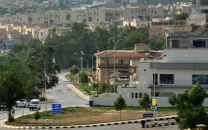Pak solar boom set to outstrip grid
Climate ministry anticipates 'negative demand' in key industrial hubs next year

Pakistan's rooftop solar generation will exceed daytime power demand on parts of the national grid next year, a senior government official told Reuters, marking a significant shift driven by a record boom in solar installations and a rapid decline in grid consumption.
The growth has lowered emissions and reduced electricity bills for some consumers, but it has also intensified financial strain on debt-burdened power utilities. Prolonged drops in grid-based demand have weakened revenues at a time when the sector is already contending with structural losses.
Speaking on the sidelines of the COP30 climate conference in Brazil, Aisha Moriani, secretary of the climate change ministry, said the country would experience "negative grid-linked demand during certain daytime hours because behind-the-meter solar is offsetting grid consumption completely".
While regions in Europe and Australia occasionally record negative electricity prices due to solar oversupply, Pakistan would become one of the first major emerging markets where rooftop generation surpasses grid-linked demand for extended periods in key industrial areas.
Lahore, which has some of Pakistan's highest rooftop solar penetration, is expected to be the first major city to see negative daytime demand. Faisalabad and Sialkot, where industrial zones have rapidly adopted solar panels, are likely to follow, Moriani said.
Power shortages and repeated tariff increases have prompted many among Pakistan's 250 million people to turn to solar energy. The country has become the world's third-largest importer of solar panels, and solar's share in its electricity mix now exceeds that of neighbouring China.
Moriani, Pakistan's lead negotiator at COP30, said negative-demand events would become more frequent during bright summer afternoons, industrial holidays and days with moderate temperatures when solar output remains high but cooling needs stay low.
She added that Pakistan's core challenge was not the pace of renewable growth but the speed at which the grid, regulatory structures and market design could adjust. The government is planning new tariffs for large solar users and revised fee structures to ensure businesses with rooftop systems contribute to grid maintenance costs.
Grid-linked electricity demand in Pakistan is expected to rise 3-4% this year, slower than long-term averages. Consumption may increase more sharply next year, but the rise could be dampened by continued growth in rooftop solar, Moriani said.
The surge in solar adoption has also influenced Pakistan's liquefied natural gas strategy. Moriani said the country had begun renegotiating LNG contracts with top supplier Qatar and cancelling cargoes previously supplied by Italy's Eni, seeking more flexible delivery schedules and lower prices.
While no formal negotiations took place with Qatar at COP30, Moriani said the conference created "diplomatic space for engagement with energy ministers and commercial representatives".
She added that Pakistan's priority was aligning gas import plans with fiscal constraints, demand projections and seasonal trends. "Pakistan seeks stability and affordability, not expansion of LNG dependency," she said.


1701351241-1/Afghan-refugees-(3)1701351241-1-208x130.webp)

















COMMENTS
Comments are moderated and generally will be posted if they are on-topic and not abusive.
For more information, please see our Comments FAQ